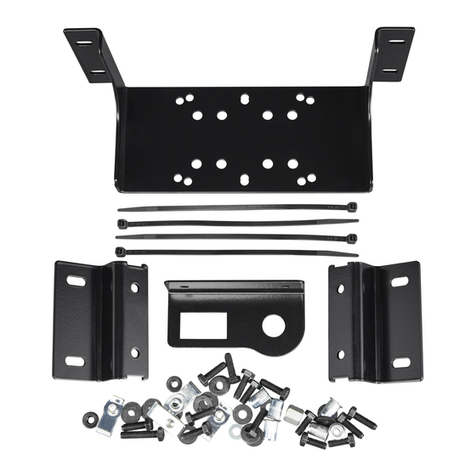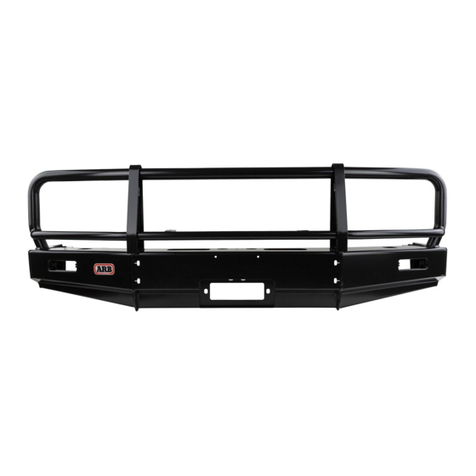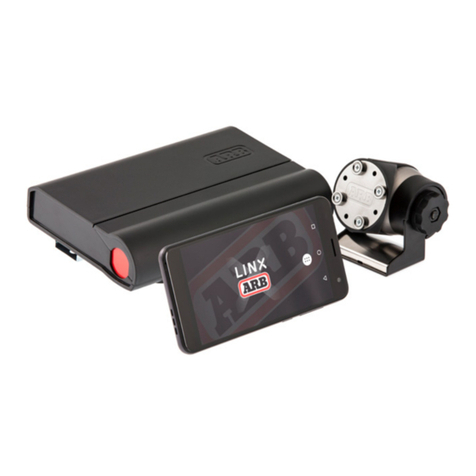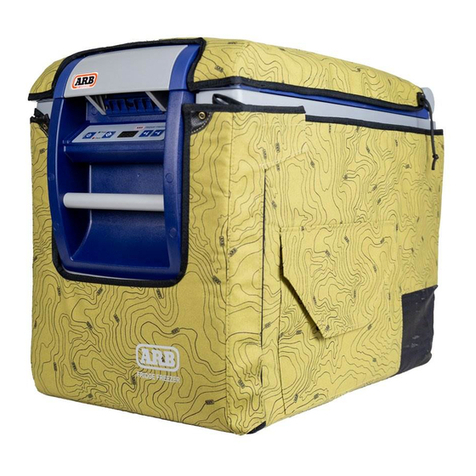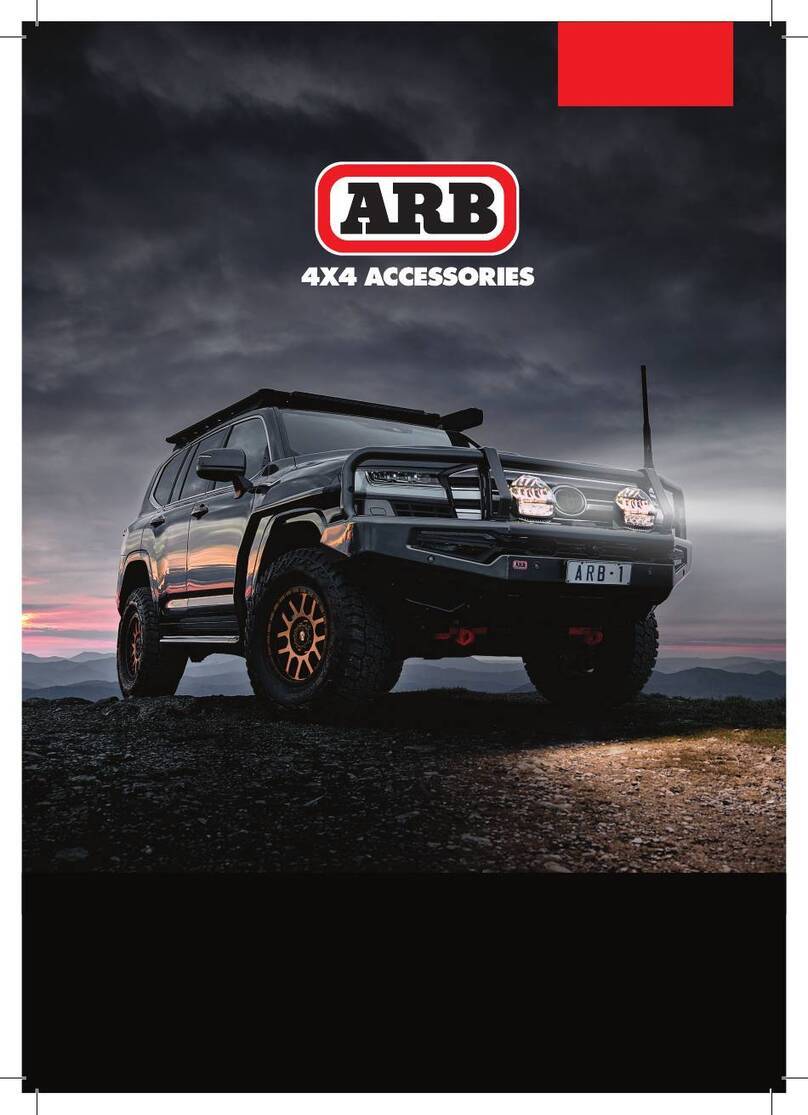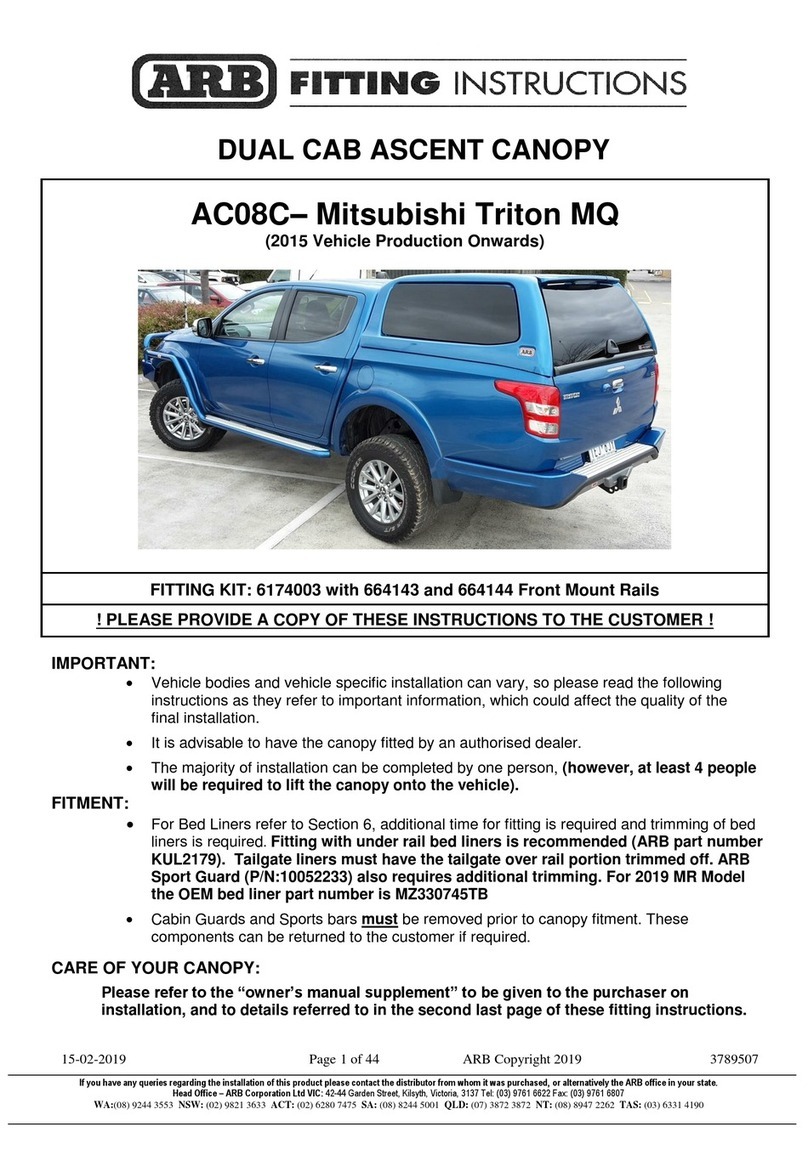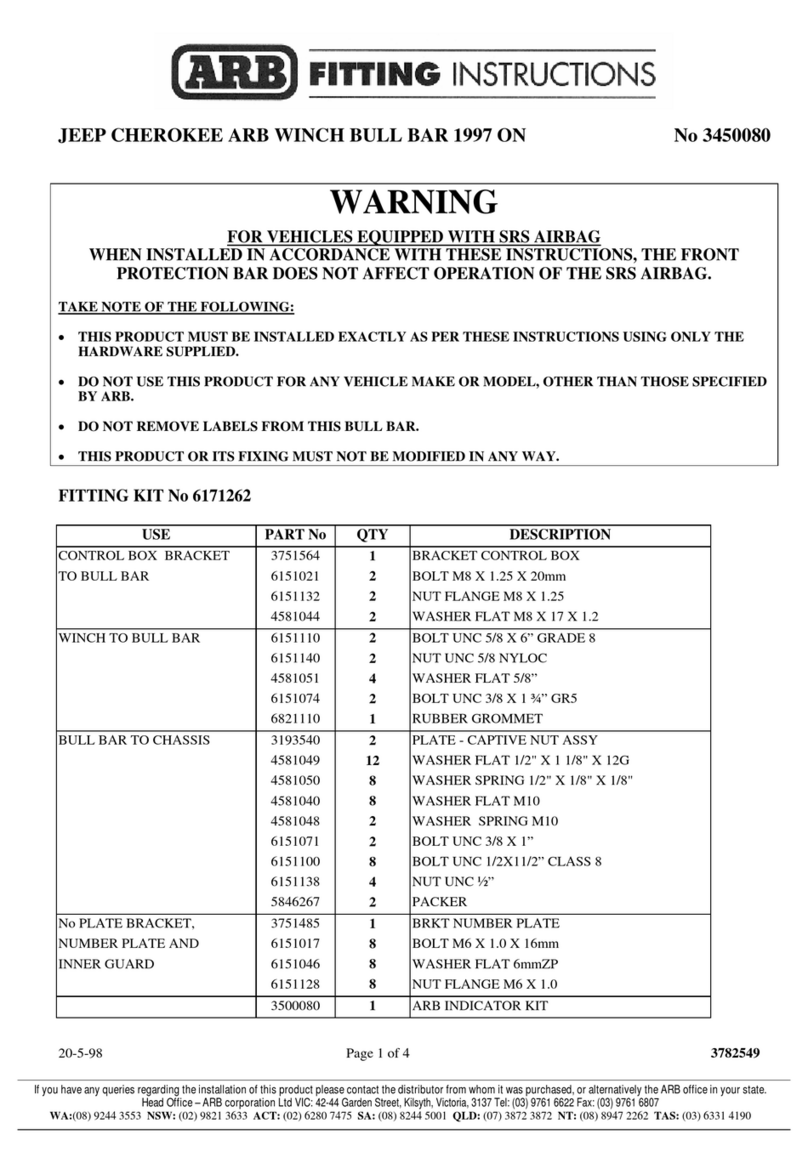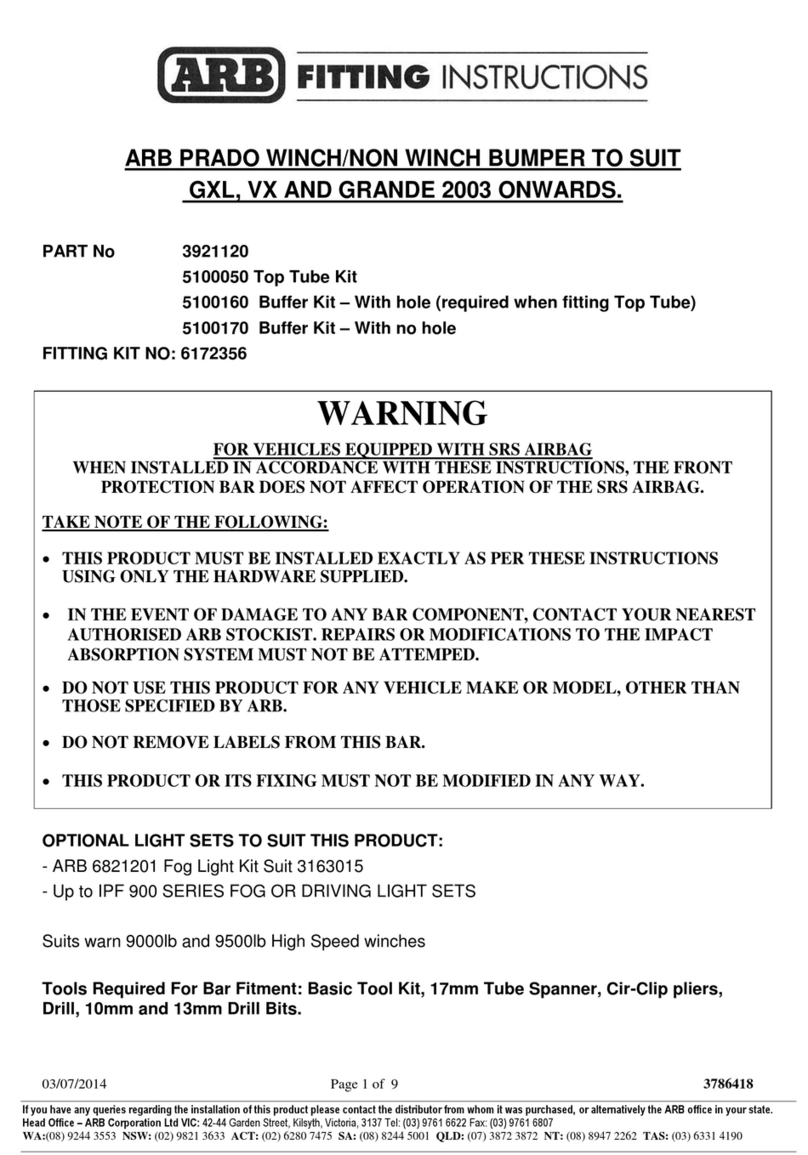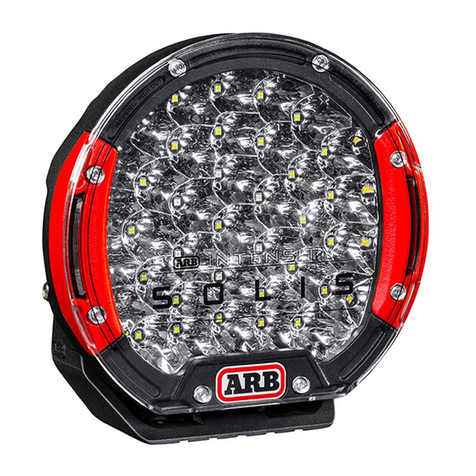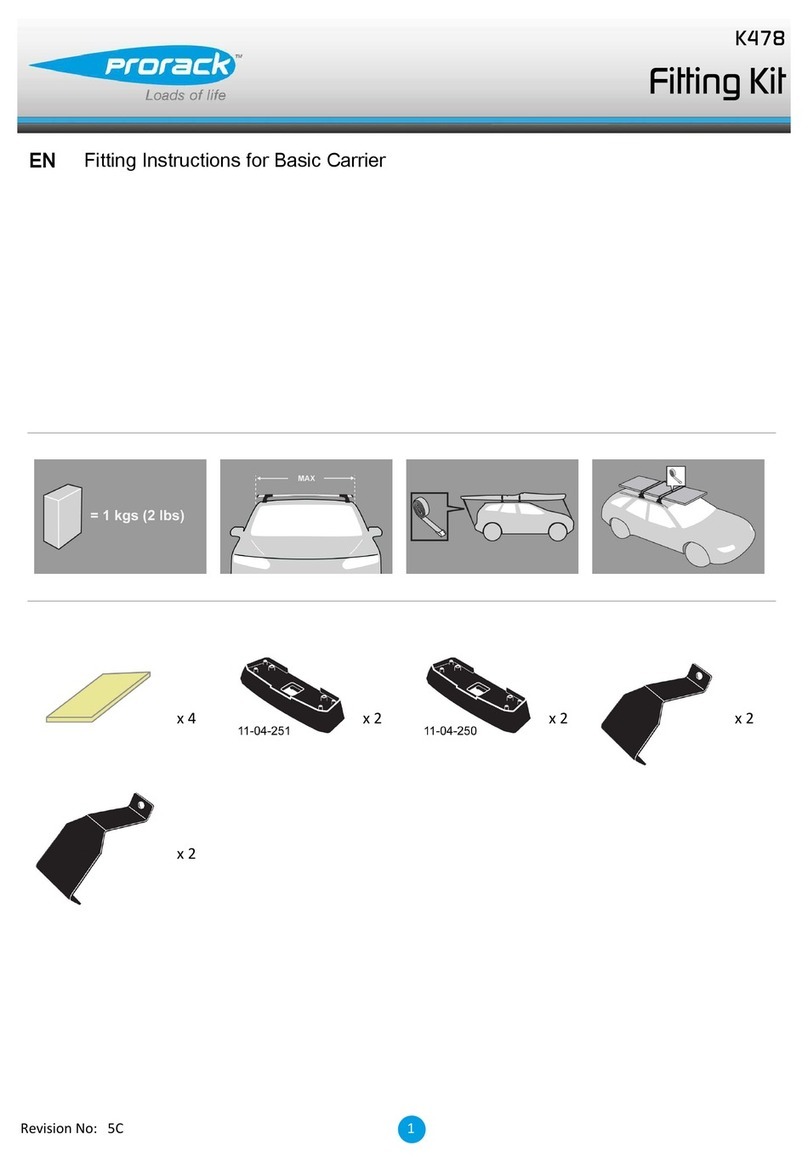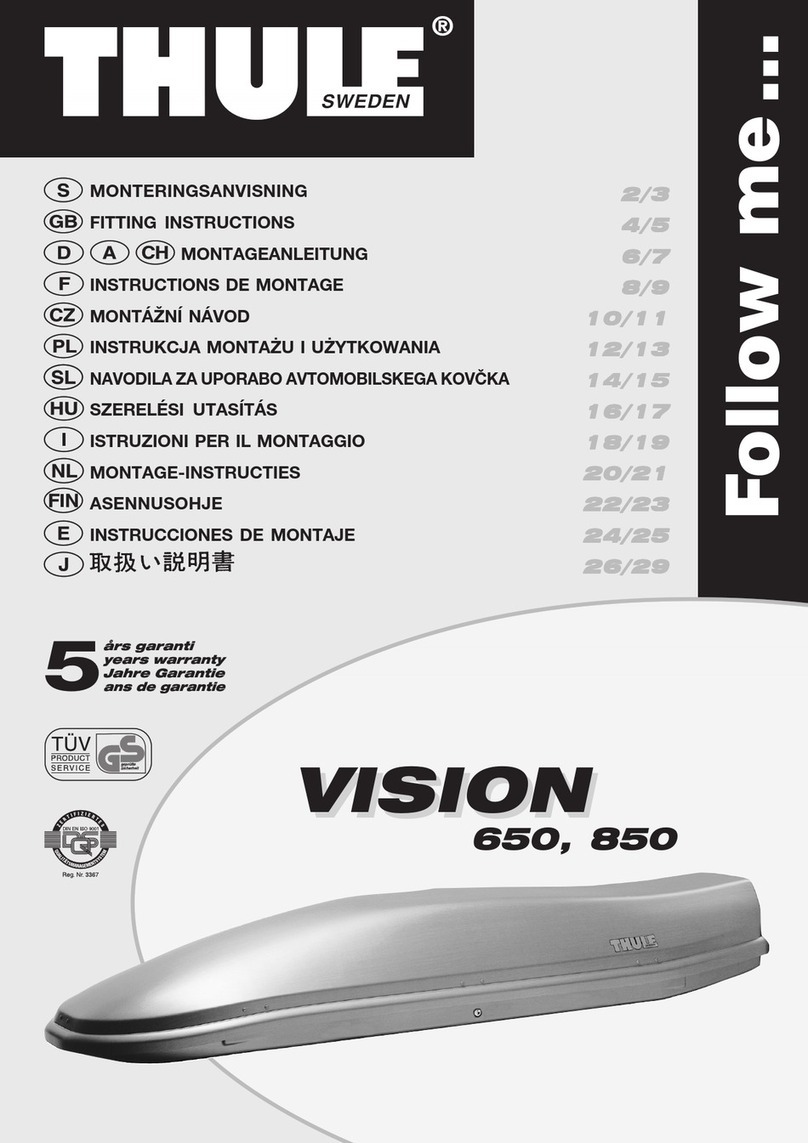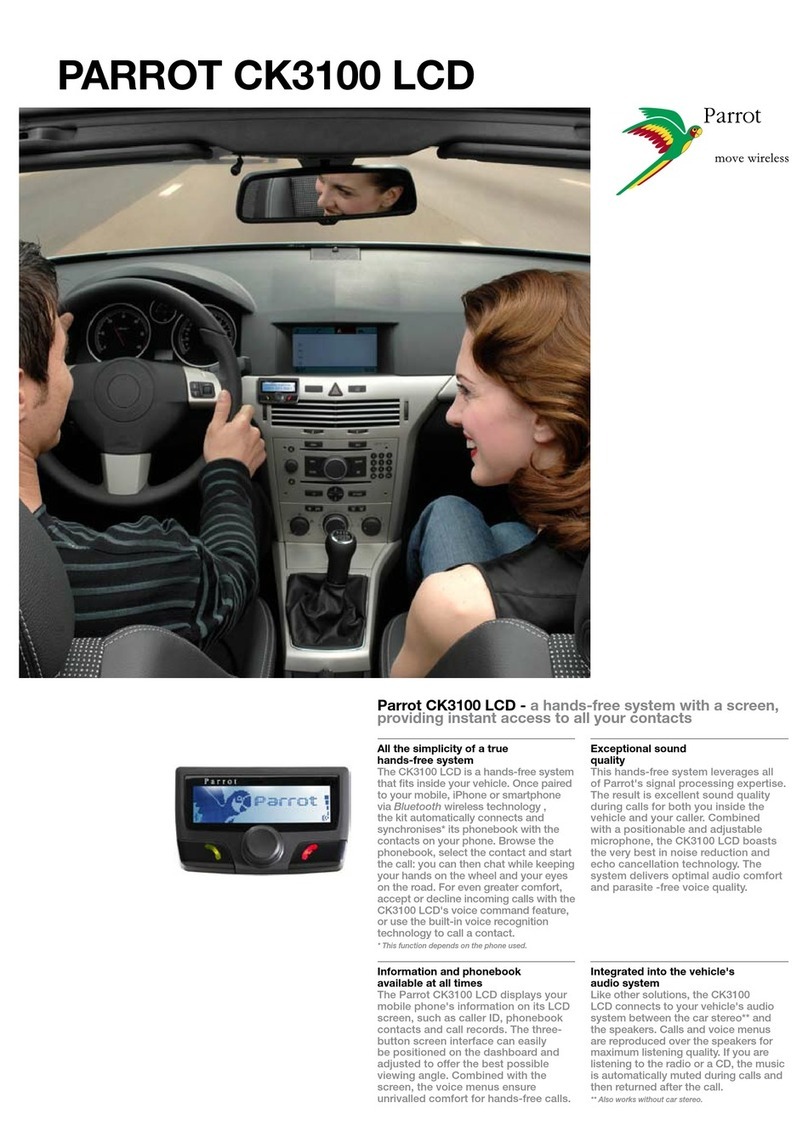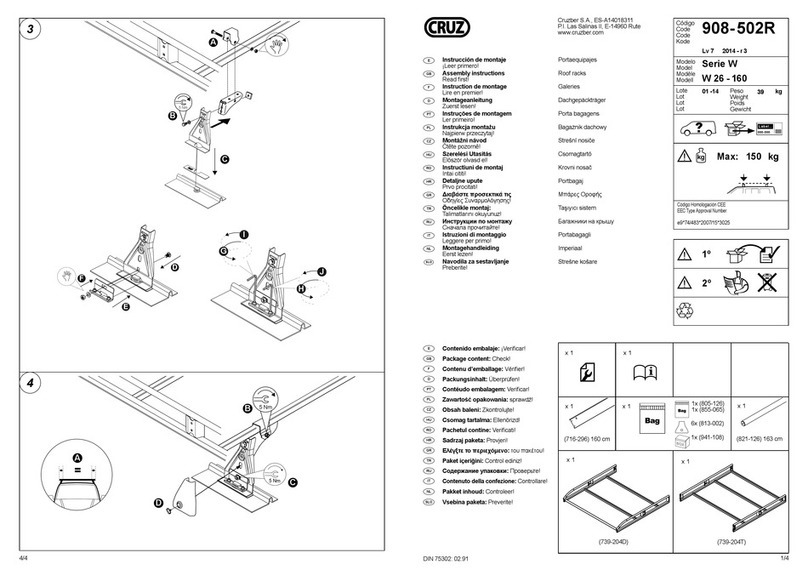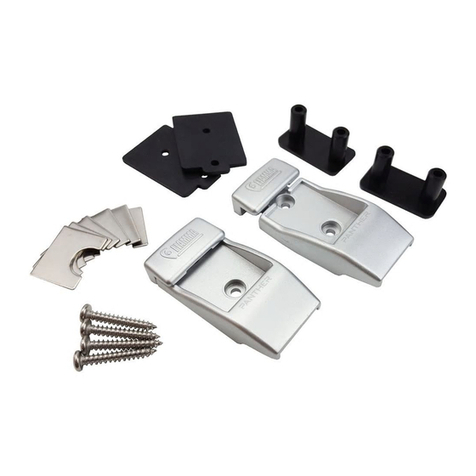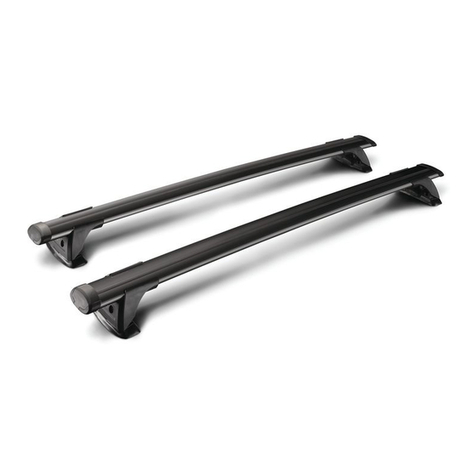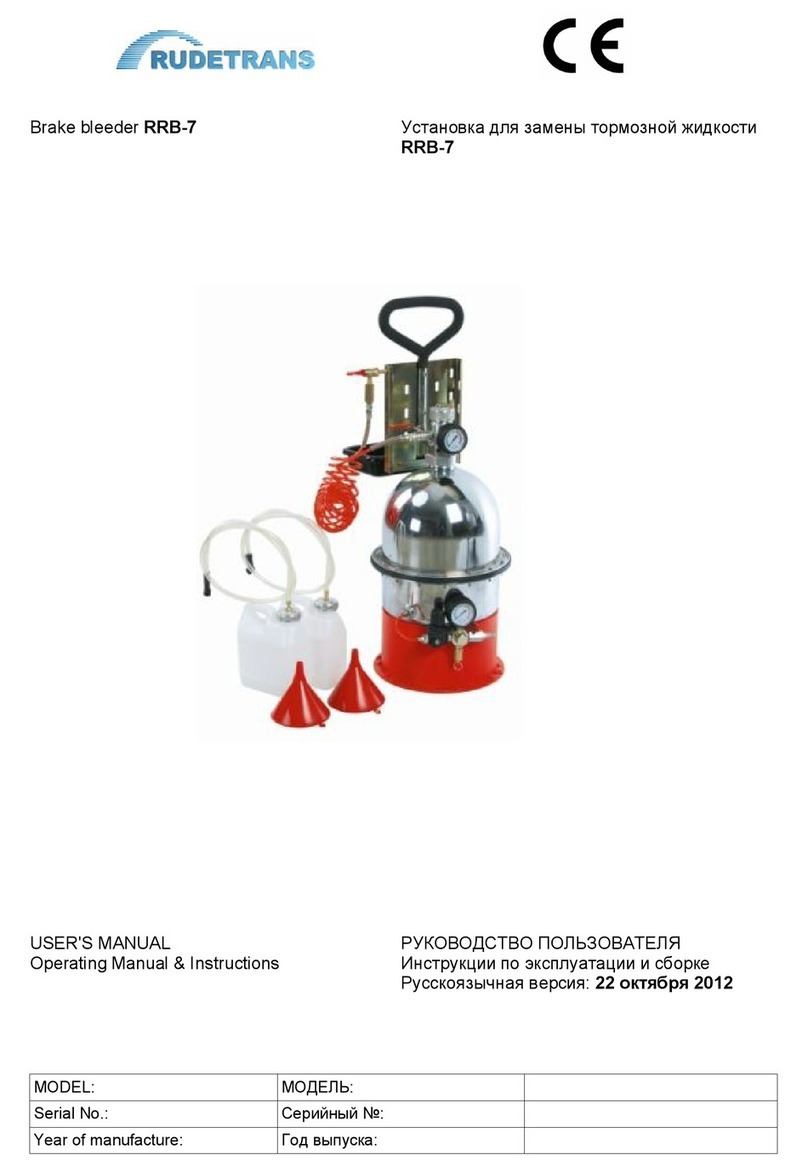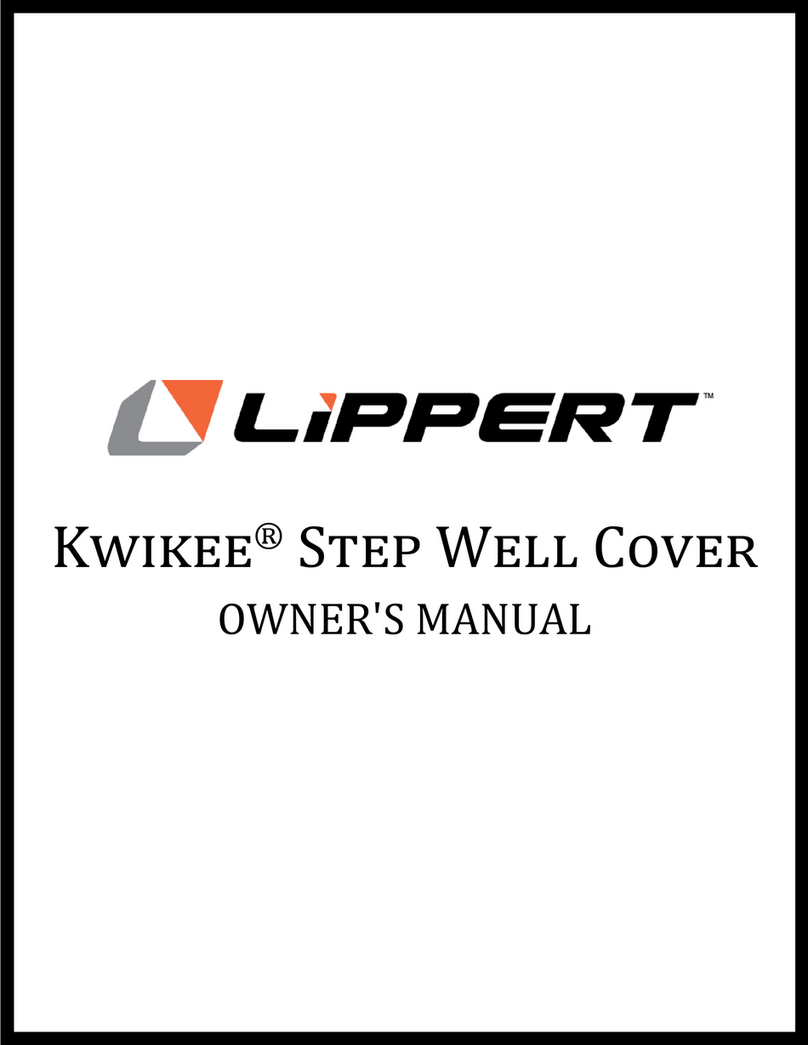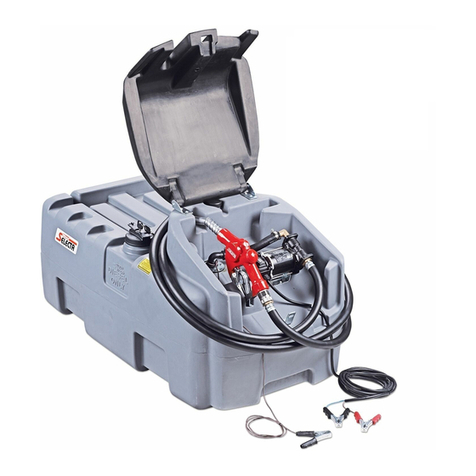ARB Airlocker RD259 User manual

RD259
DODGE RAM 1500 31SPL
9.25” REAR ZF C-CLIP AXLE
AIR OPERATED
LOCKING DIFFERENTIAL
INSTALLATION GUIDE

No liability is assumed for damages resulting in the use of the information contained herein.
ARB AIR LOCKER Locking Differentials and AIR LOCKER are trademarks of ARB Corporation Limited.
Other product names used herein are for identification purposes only and may be trademarks of their respective owners.
ARB 4x4 ACCESSORIES
Corporate Head Office
42-44 Garden St Tel: +61 (3) 9761 6622
Kilsyth, Victoria Fax: +61 (3) 9761 6807
AUSTRALIA
3137
www.arb.com.au

Table of Contents:
1
1 Introduction
2
1.1
Pre-Installation Preparation
2
1.2
Tool-Kit Recommendations
3
2 Removing the Existing Differential
4
2.1
Vehicle Support
4
2.2
Differential Fluid Drain
4
2.3
Removing of the Axles
5
2.4
Marking the Bearing Caps
6
2.5
Checking the Current Backlash Amount
7
2.6
Removing the Differential Carrier
9
3 Installing the Air Locker
10
3.1
Mounting the Ring Gear
10
3.2
Assembling the Seal Housing
12
3.3
Installing the Carrier Bearings
13
3.4
Drilling and Tapping the Bulkhead Port
14
3.5
Final Air Locker Assembly
15
3.6
Checking the Backlash
16
3.7
Setting up the Bulkhead Fitting
17
3.8
Profiling the Seal Housing Tube
19
3.9
Bench Testing the Air Locker
20
3.10
Reinstalling Differential and Axles
21
4 Installing the Air System
23
4.1
Mounting the Solenoid
23
4.2
Running & Securing the Air Line
25
4.3
Connection to the Bulkhead Fitting
26
5 Mounting & Connecting the Electrical System
28
5.1
Mounting the Actuator Switch(es)
28
5.2
Wiring the Actuator System
29
6 Testing & Final Assembly
32
6.1
Leak Testing
32
6.2
Testing the Air Locker Actuation
32
6.3
Filling the Differential
33
6.4
Post-Installation Check List
34
7 Parts List
35
7.1
Exploded Assembly Diagram
35
7.2
Specifications
35
7.3
Itemized Parts List
36

1 Introduction
2
IMPORTANT :
BEFORE ATTEMPTING TO DISMANTLE YOUR VEHICLE FOR THIS
INSTALLATION, PLEASE READ THIS INSTALLATION GUIDE IN ITS
ENTIRETY, AS WELL AS ALL APPLICABLE SECTIONS OF YOUR
VEHICLE MANUFACTURER’S SERVICE MANUAL.
1.1 Pre-Installation Preparation
This booklet is to be used in conjunction with your vehicle
manufacturer’s service manual. ARB endeavors to account for every
possible variation in vehicle model when publishing its installation
guides, and guides are updated regularly as new model information
becomes available, however, the rapid and globally varied release of
some vehicles makes it difficult to insure that your vehicle model has
been accurately accounted for. In the case of any technical
discrepancies between this guide and your service manual, we
strongly advise that you adhere to the specifications and techniques
as documented in your service manual.
Although your ARB Air Locker comes complete with all the step by
step instructions you will need to supplement your vehicle
manufacturer’s service manual and install your new differential, ARB
recommends that you have your Air Locker installed by a trained
professional. Many ARB distributors around the world have been fully
instructed in Air Locker installations by ARB, and have gained a wealth
of experience and skill from years of performing similar installations.
Once you begin this installation your vehicle will be immobile until all
steps of the installation are complete. Make sure your Air Locker kit is
the correct model for your vehicle and that it contains all of the parts
listed on back cover of this booklet. Also be sure you have
appropriately equipped yourself with all the necessary tools, parts, and
materials to complete this installation (see Section 1.2 Tool-Kit
Recommendations), and that you have allowed for an appropriate
amount of vehicle down time.
HINT : Place a mark inside each of the symbols as
you complete each step. It is very important NOT to
miss any of the steps!

1 Introduction
3
1.2 Tool-Kit Recommendations
Below is a list of tools and supplies you may need to complete this
installation. Requirements for your vehicle may vary. Please consult
your vehicle service manual for additional recommendations.
1.2.1 Tools
Standard automotive sizes (metric and/or imperial) of sockets,
wrenches, Allen keys, and drills.
A dial indicator or other suitable measuring tool for checking ring &
pinion backlash.
A standard automotive feeler gauge.
An automotive brake tubing cutter to cut the seal housing tube.
A razor knife suitable for cutting the nylon tubing.
A torque wrench. (See vehicle service manual for required torque
range.)
A lubricant drain reservoir.
An 11.2mm [7/16”] drill and ¼” NPT tap for bulkhead fitting
installation.
An automotive bearing puller (e.g., ARB Bearing Puller #0770001)
or a differential carrier bearing puller.
A soft hammer (e.g. raw hide of nylon)
Needle-nosed Pliers.
A bearing press or arbor press.
A long ½”socket extension bar for adjuster nut backlash &
preloading.
1.2.2 Supplies
Thread lubricant/sealant compound for pressure fittings
(e.g., LOCTITE #567 Teflon past)
Thread locking compound (e.g., LOCTITE #272)
A gasket sealant or replacement gasket for your differential cover.
A sufficient volume of differential oil to completely refill your
housing. (See the ARB Air Locker Operating and Service Manual
for recommended lubricants)
A soap and water mixture to test for air leaks.

2 Removing the Existing Differential
4
2.1 Vehicle Support
Safely secure the vehicle on a hoist. We recommend supporting the
vehicle on a chassis hoist to keep the differential area at a
convenient working height and to leave the wheels and axles free
to be rotated and removed.
Once supported off the ground, release the parking brake and
leave the vehicle in neutral. Chock the wheels if necessary.
2.2 Differential Fluid Drain
HINT : This is a good time to check for metal particles in
your oil, on your drain plug, or in the bottom of the
housing which may indicate a worn bearing or
differential component.
Clean around the differential cover plate seal to prevent dirt from
entering the differential.
Position a fluid drain reservoir under the differential and loosen all
differential cover plate retaining bolts.
If a drain plug exists, remove it and completely drain all differential
oil from the housing.
If no drain plug exists then the oil can be drained by loosening the
cover bolts and gently prying the cover away at the bottom until oil
runs out.

2 Removing the Existing Differential
5
2.3 Removal of the Axles
IMPORTANT :
Collision damage or heavy off-road use of your vehicle in the past may
have resulted in some degree of bending in the axle. Any misalignment
of the axle tubes may result in excessive wear and/or failure of your
differential and axle shafts. ARB strongly recommends that you have
your axle assembly inspected for concentricity and straightness before
installing your Air Locker.
Remove both of the rear wheels and brake assembly according to
your vehicles service manual.
Remove the differential cover.
Rotate the differential carrier using the drive shaft until you have
clear access to the cross shaft retaining pin.
Completely remove the retaining pin from the differential carrier.
Rotate the differential carrier again until you can completely remove
the cross shaft.
Tap the axle shafts inward to unseat the ‘C’ clips from their pockets
in the center of the differential side gears.
Using needle nosed pliers or your fingers, remove both ‘C’ clips
from the differential.
Tap the axle shafts outward until the splines are disengaged from
the differential side gears.
Gently slide the axle shafts out of the axle tubes until they can be
completely removed from the vehicle.
NOTE : The axle oil seals are delicate and can be easily
damaged. Support the weight of the axle shaft when
drawing them out of their sockets in the housing.

2 Removing the Existing Differential
6
2.4 Marking the Bearing Caps
Using a small pointed center punch, gently mark the bearing caps
in a way that will enable you to know which cap is ‘LEFT’ and which
cap is ‘RIGHT’, which way is ‘UP’ and which way is ‘DOWN’.
(Fig.1.)
HINT : Many installers choose to make one punch mark on
the left hand side of the left hand bearing cap and a
similar mark on the housing at close proximity to the
cap mark. The right hand side is then designated with
two punch marks on the right hand side of the cap and
two similar punch marks on the housing.
Figure
1.

2 Removing the Existing Differential
7
2.5 Checking the Current Backlash Amount
IMPORTANT:
This step is a precautionary measure recommended by ARB due
to the fact that some aftermarket ring and pinion sets have been
manufactured to run with different backlash settings than those
specified by your vehicle manufacturer. Although ARB must
recommend you set backlash according to your service manual
guidelines, we also advise that you compare the backlash
measurements taken here to the recommended backlash settings
in your vehicle service manual. Measurements found to be
outside of your service manual recommendations may indicate
the need to deviate from those settings in order to achieve quiet
running with a good contact mark.
Refer to your vehicle service manual or your local authorized
ARB installer for more information.
Set a dial indicator on one of the ring gear teeth. (Fig.2.)
Figure
2.

2 Removing the Existing Differential
8
While supporting the pinion gear by holding the pinion flange, rotate
the differential in both directions while observing the maximum
variation in depth from the indicator (i.e., the highest value minus
the lowest value). This value is referred to as the ring and pinion
backlash.
Rotate the differential center 90and measure again for accuracy.
Record the average of all measurements.

2 Removing the Existing Differential
9
2.6 Removing the differential carrier
Remove both adjuster nut locking tabs.
Unbolt and remove both bearing caps.
Using the supplied hex tool on an extension bar, loosen both
adjuster nuts at least half a turn.
Carefully remove the differential carrier from the housing.
Remove the tapered roller bearings from the differential carrier with
a bearing puller. (Fig.3.)
NOTE : The differential carrier is heavy and quite difficult to
handle when covered in oil. Take care not to drop it.
HINT : Be sure not to mix up the left and right hand bearing
cups. Later it will be necessary to know which cup
came from which side.
HINT : Check the condition of the bearings for wear and
replace if necessary.
Figure
3.

3 Installing the Air Locker
10
3.1Mounting the Ring Gear
Remove the bolts that hold the ring gear in place.
Using a plastic or copper hammer, tap in a circle around the ring
gear to separate it from the differential carrier.
Thoroughly clean any thread locking compound or other foreign
matter from the holes of the ring gear, the threads of the ring gear
bolts, the mating surfaces of the ring gear and the Air Locker
flange.
HINT : Rubbing the ring gear mounting face with a flat oil
stone before installation will remove any high spots
around the threads.
Heat the ring gear to between 80 and 100C (175 - 212F) in hot
water or in an oven to slightly expand the gear and facilitate
assembly.
NOTE : NEVER HEAT GEARS WITH A FLAME! This could
damage the hardened surface of the gear and result in
premature wear or failure.
Dry the gear and tapped holes with compressed air (if wet).
Apply a thin film of high-pressure grease to the ring gear shoulder
of the Air Locker to prevent seizing.
Install the ring gear onto the Air Locker by aligning the tapped holes
and then gently tapping it around in a circle with a soft mallet or
hammer. Avoid using the bolts to pull the ring gear down as this
puts excess strain on the bolts and the differential flange.
Apply a thread locking compound to the thread of each ring gear
bolt before inserting it. Do not apply locking compound directly into
the threaded hole as this could prevent the bolt from reaching its
full depth.
Tighten the ring gear bolts in a star pattern with a torque wrench
(Fig.4.) set to your vehicle manufacturer’s specified torque.

3 Installing the Air Locker
11
Figure
4.

3 Installing the Air Locker
12
3.2Assembling the Seal Housing
Figure
5.
Make sure the grooves and airway of the seal housing are clean
and free from any contaminants (e.g. water, dirt, metal filings, etc.).
Inspect the seal housing O-rings (supplied) for dirt, damage or
other conditions which might cause leaks.
Generously lubricate the O-rings with oil prior to assembly, then
insert them into the grooves of the seal housing.
NOTE : When assembling the O-rings, be careful not to leave
them twisted when seated in the grooves as this could
cause excessive wear and leakage.
Lubricate the seal housing running surface on the Air Locker carrier
with oil.
Carefully install the seal housing by sliding it all of the way onto the
seal housing journal with a gentle twisting motion. This will allow
the O-rings to engage gently (Fig.5.).

3 Installing the Air Locker
13
NOTE : A twisting motion (i.e., a slight rotation while pressing
the seal housing on) will allow the O-rings to engage
gently and prevent them from twisting. Twisted
O-rings will result in pre-mature O-ring wear and oil
contamination in the air system due to the helical
shape formed by the O-ring mould line.
NOTE : Make sure the orientation of the seal housing is as
shown in Fig.5., with the seal housing flange closest
to the flange cap, and the tube pointing up.
3.3Installing the Carrier Bearings
With the Air Locker well supported in an arbor press, apply a thin
film of high pressure grease to the case side bearing journal of the
Air Locker to prevent seizing.
Press the case side (right hand side) bearing cone onto one
bearing journal of the Air Locker (refer to Fig.6.) until the bearing
seats firmly against the bearing journal shoulder.
NOTE : Never re-use any bearings which are damaged or
worn.
Figure
6.

3 Installing the Air Locker
14
Bulkhead Port
Invert the Air Locker and press the flange side bearing cone onto
the flange side bearing journal of the differential carrier until the
bearing seats firmly against the bearing journal shoulder.
3.4Drilling and Tapping the Bulkhead Port
An airline port must be drilled and tapped through the differential
housing to mount the bulkhead fitting into.
Mark a spot on the top of the outside shell of the differential
housing in the position shown in Fig.7. Ensure it is in an area that
will be well clear of the ring gear position, the Air Locker, and any
other obstructions that may snag the seal housing tube.
Figure
7.
Cover the drive pinion and axle tube areas with a rag to protect
them from metal filings.
NOTE : It is a good idea to place a magnet on the inside of the
differential housing to collect metal filings when drilling
& tapping.
Drill an 11.2mm [7/16”] diameter hole through the differential
housing square to the inside surface.
Tap the hole from the outside using ¼” NPT pipe tap.
Remove any sharp edges that may chip off from around the hole
and fall into the housing.
Very carefully, remove the rags and inspect with a service light
inside the housing to ensure no metal filings are left behind.

3 Installing the Air Locker
15
3.5 Final Air Locker Assembly
Using the provided hex tool on an extension bar, loosen both
adjuster nuts so that they are as far into the axle tube as they will
go to give extra room for the Air Locker.
Place the Air Locker into the differential housing and install the
bearing caps.
NOTE : Be sure to check that the bearing caps are on the
correct sides of the third member and are correctly
aligned.
Rotate the seal housing so the slot is pointing straight out of the
housing opening. Then install the seal housing bracket with the tab
locating in the seal housing slot.
Insert the bearing cap bolts and finger tighten. It is not necessary to
torque them down at this time.
Use the hex tool on an extension bar and tighten the flange side
adjuster nut into the ring gear side bearing cap.
NOTE : You should feel no backlash between the ring and
pinion gears once the adjuster nut tightens.
Reverse the adjuster nut (counterclockwise) ¼ turn.
Using the hex tool, tighten the case side adjuster nut into the
differential until it seats against the bearing, and add the
appropriate amount of preload.
NOTE : You should now feel some backlash between the ring
and pinion gears. If not, there might be a clearance
problem which is binding the carrier. Re-check the
clearance.

3 Installing the Air Locker
16
3.6 Checking the Backlash
Set a depth indicator on one of the ring gear teeth. (Fig.8.)
Figure
8.
While supporting the pinion gear by holding the drive shaft flange,
rotate the differential in both directions while observing the
maximum variation in depth from the indicator (i.e., the highest
value minus the lowest value). This value is referred to as the ring
and pinion backlash.
Rotate the differential center 90and measure again for accuracy.
Refer to your vehicle service manual for the specified maximum
and minimum amounts of backlash.
IMPORTANT:
It is critical to set up bearing pre-load when a differential is
installed. Improper pre-load will result in undue bearing wear,
increased stresses in the differential center, increased running
noise, and ultimately, ring and pinion gear damage.
Adjust the backlash and pre-load using the supplied hex tool on an
extension bar to tighten or loosen the adjuster nuts as required.
(Refer to your vehicle service manual.)
Recheck backlash as before, repeating this procedure until
backlash is within the specified amount.

3 Installing the Air Locker
17
Tighten all bearing caps bolts with a torque wrench to the torque
specified in your vehicle manufacturer’s service manual.
Reinstall the adjuster nut locking tabs.
3.7 Setting up the Bulkhead Fitting
Apply thread sealant to the outside threads of the bulkhead body.
Screw the bulkhead body into the tapped hole, and lightly tighten
using a 14mm [9/16”] spanner.
Wipe the area clean of any excess thread sealant (inside and
outside of the housing).
Without using sharp, jagged tools such as pliers (your hands are
the best tool for this job), bend the seal housing tube to
approximate the finished profile. This will allow the tube to be
trimmed to a length that would allow it to protrude from the
bulkhead fitting. (Fig.9.)
NOTE : Use an automotive brake line tubing cutter to cut the
seal housing tube. Never use a hacksaw as this will
leave metal filings in the air system.
Figure
9.

3 Installing the Air Locker
18
Insert the free end of the seal housing tube into the bulkhead fitting
until it protrudes approximately 8mm [5/16”] through the other side.
From the outside of the housing, assemble one of the small O-rings
over the top of the short length of seal housing tube protruding
through the bulkhead fitting.
Install the brass spacer.
Install the second small O-ring after the spacer.
While holding the seal housing tube into the bulkhead fitting, insert
the chamfered end of the center compression nut over the
extended tube as shown in the assembly diagram (Fig.10.), and
screw it into the bulkhead body, and tighten using Pozidriv #3
screwdriver.
Figure
10.
NOTE : Make sure the seal housing tube is all of the way into
the center compression nut while you are tightening
it.
NOTE : Firmly tighten the center compression nut so that a
good seal is formed around the tube.
Table of contents
Other ARB Automobile Accessories manuals

ARB
ARB 3414020 User manual
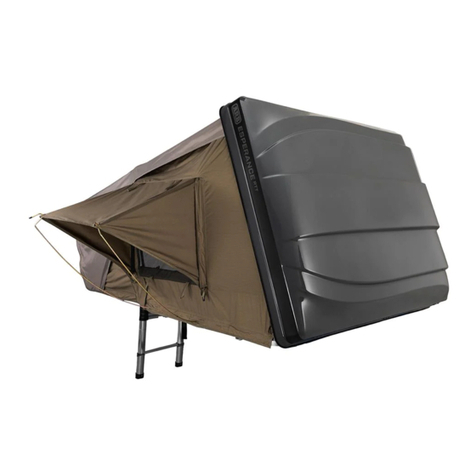
ARB
ARB ESPERANCE 802200 User manual
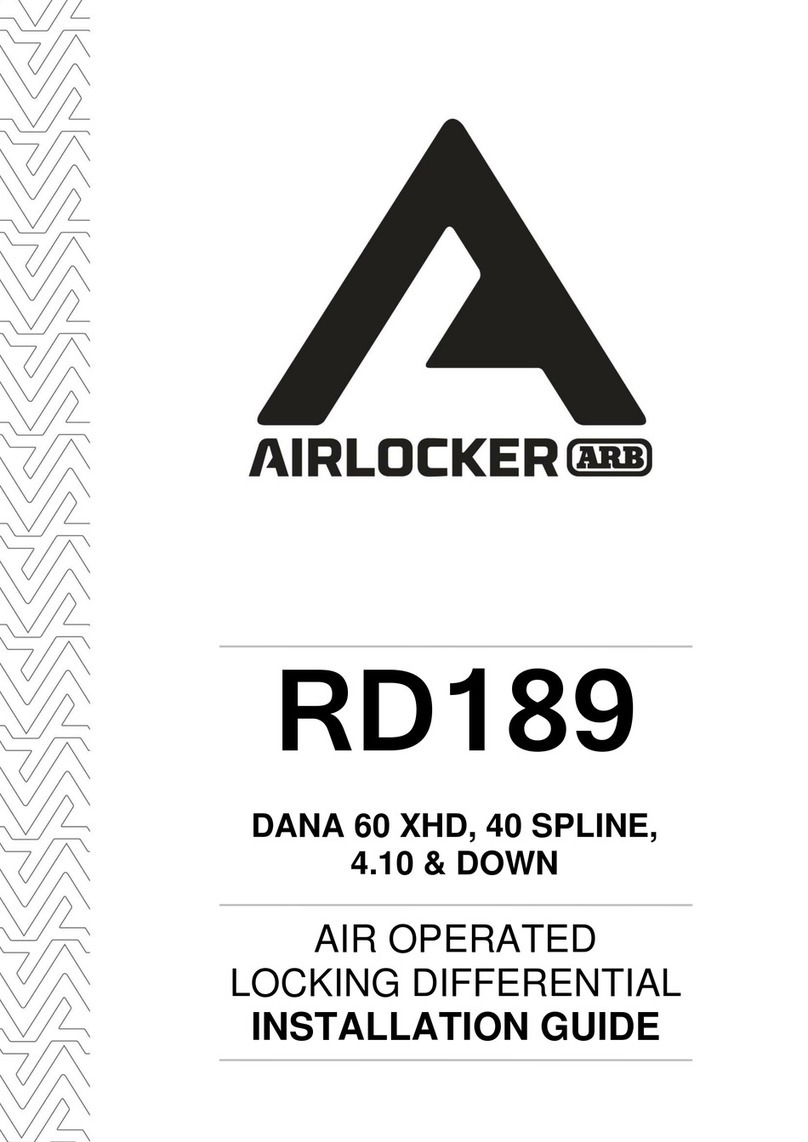
ARB
ARB AIRLOCKER RD189 User manual
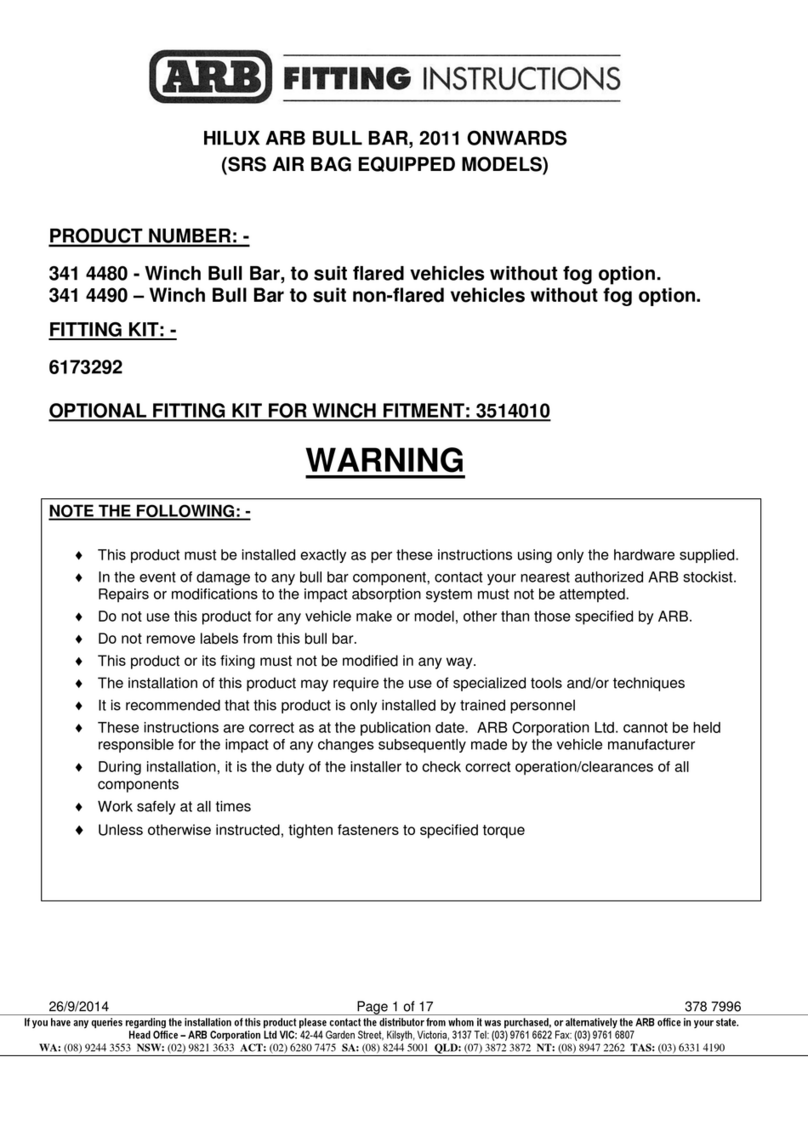
ARB
ARB 341 4480 User manual
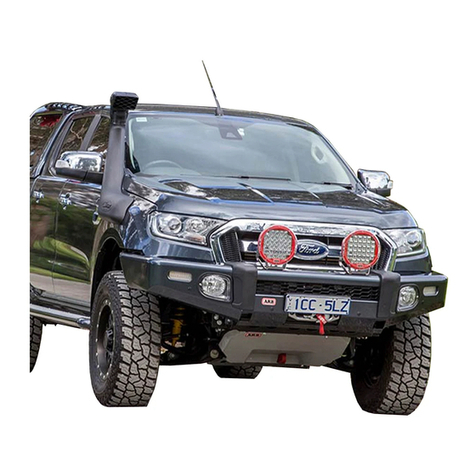
ARB
ARB 3940420 User manual

ARB
ARB Airlocker RD146 User manual
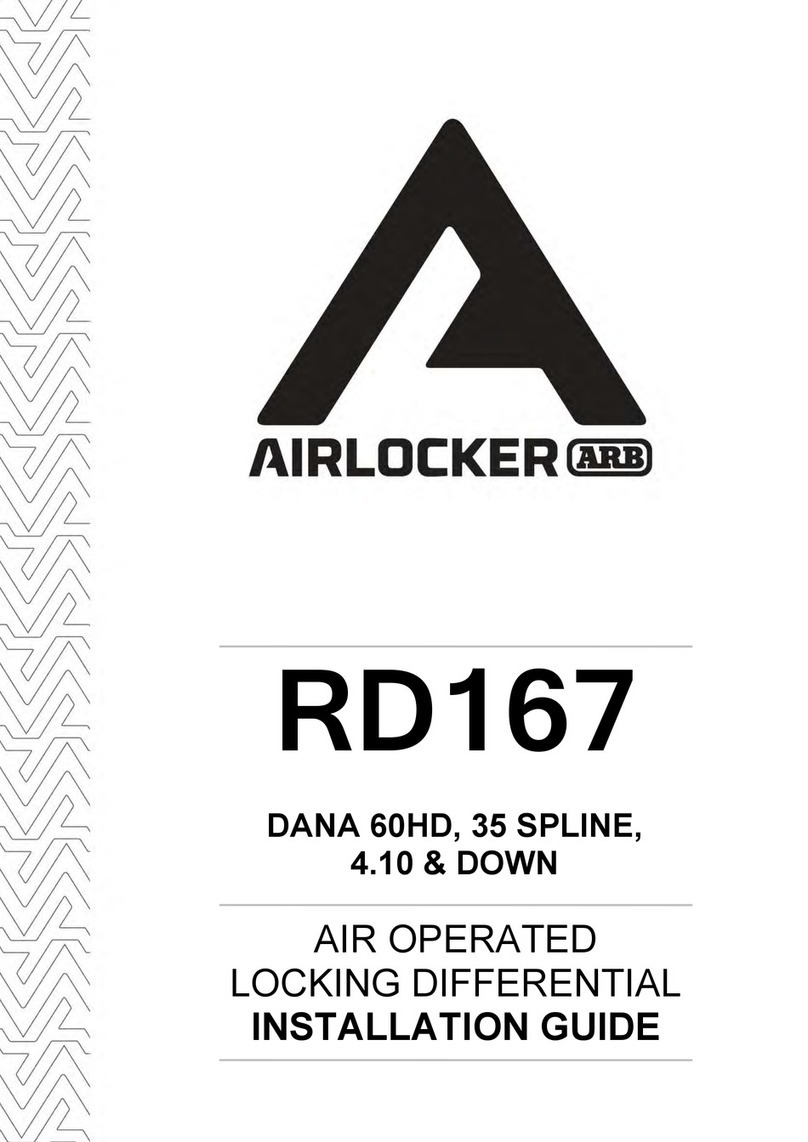
ARB
ARB Airlocker RD167 User manual
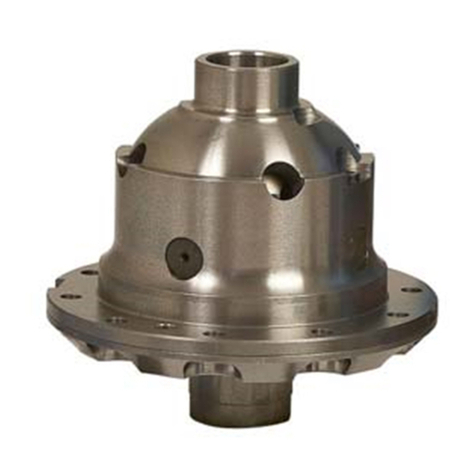
ARB
ARB RD116 User manual
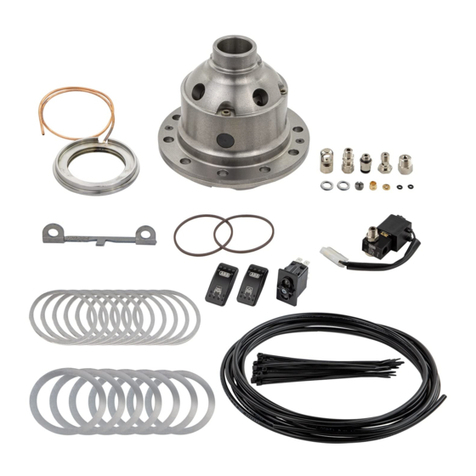
ARB
ARB RD246 Product information sheet
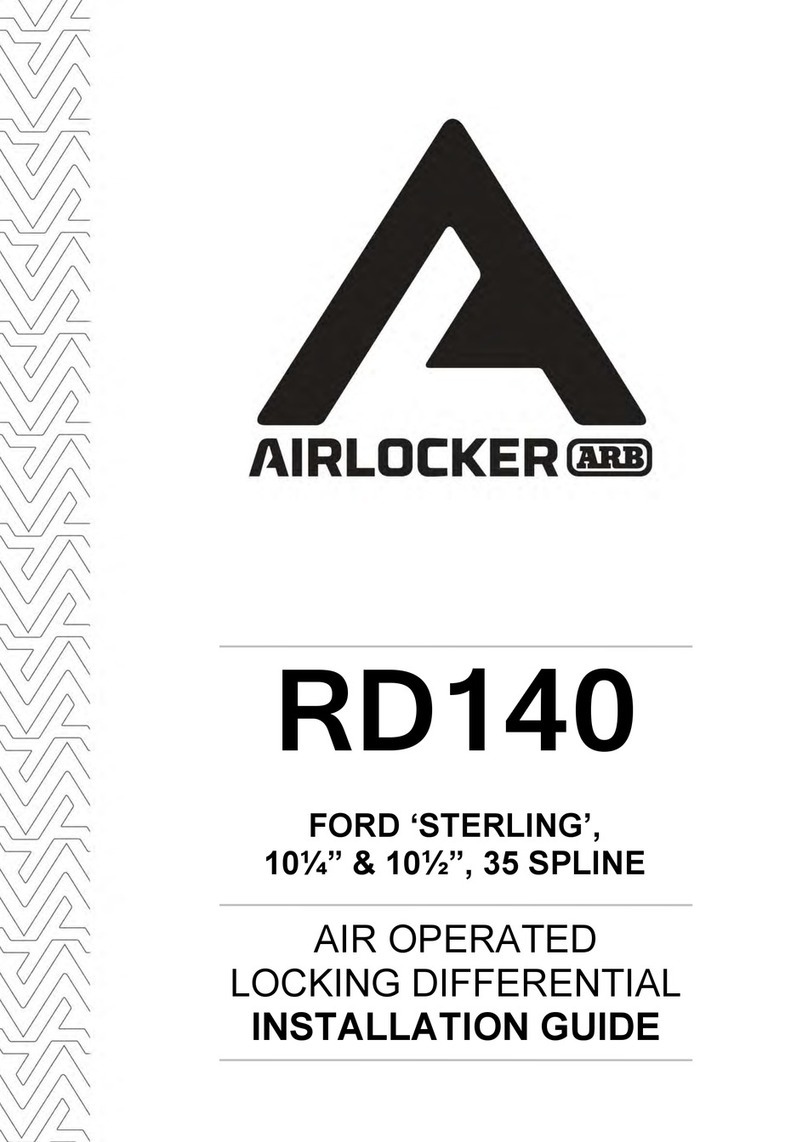
ARB
ARB Airlocker RD140 User manual
Popular Automobile Accessories manuals by other brands

Whispbar
Whispbar K899W Fitting instructions
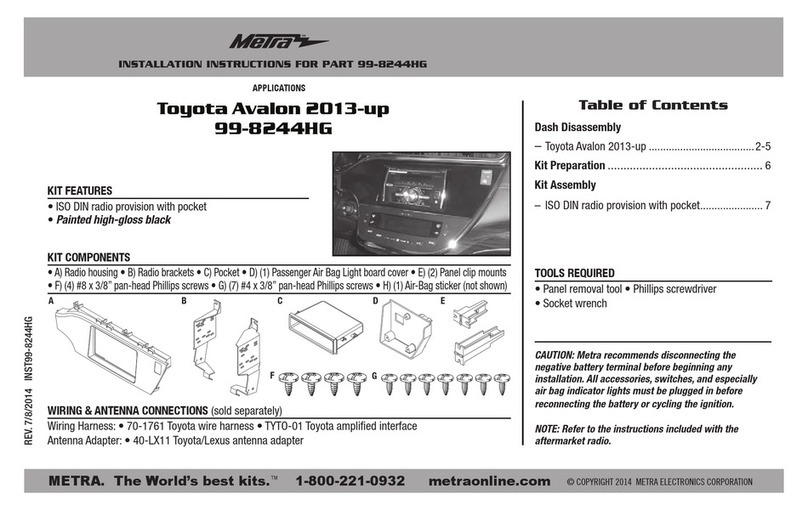
Metra Electronics
Metra Electronics 99-8244HG installation instructions

D-Flector
D-Flector D600 installation guide
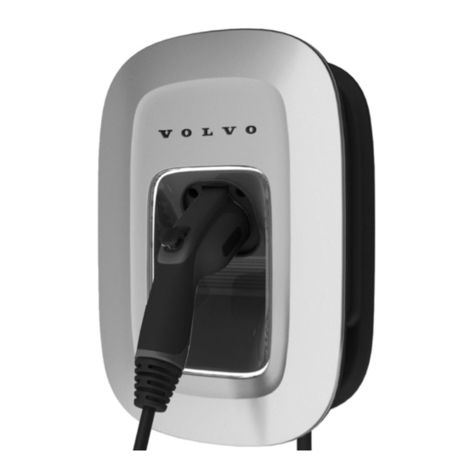
Volvo
Volvo EVSE-VX Accessories User Guide

SportRack
SportRack EXPLORER A90095 instruction sheet
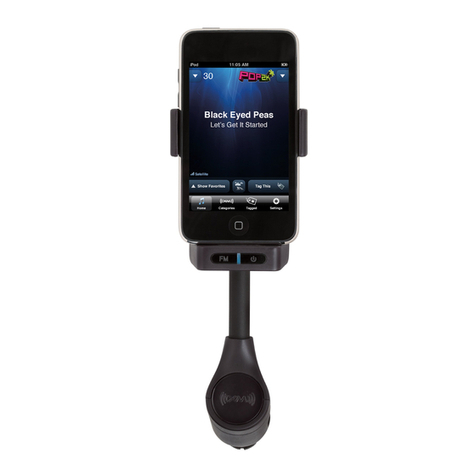
Sirius Satellite Radio
Sirius Satellite Radio XM SkyDock user guide
